Celebrating NAIDOC Week with babies aged 0–12 months is a beautiful opportunity to introduce them to the richness of Aboriginal and Torres Strait Islander cultures through sensory, visual, and rhythmic experiences. Here are some gentle, age-appropriate ideas tailored for your littlest learners.
Sensory & Art Experiences
- Dot Painting with Fingers: Use non-toxic paints and let babies explore dot patterns on paper using their fingers or cotton tips.
- Natural Texture Collage: Create a tactile collage using bark, leaves, and soft fabrics inspired by Country. Babies can explore textures safely under supervision.
- Rainbow Serpent Mobile: Craft a simple mobile using soft felt or paper shapes inspired by the Rainbow Serpent, hung above a play mat for visual stimulation.
Music & Movement
- Indigenous Lullabies: Play soft Indigenous music or lullabies during rest time. Songs like Inanay or Taba Naba offer gentle rhythms and cultural connection.
- Clap Stick Rhythms: Use soft wooden rhythm sticks or even hands to mimic traditional clap stick patterns during group time.
- Dance Along: Hold babies or let them bounce on your lap to the beat of traditional music—movement helps build rhythm and bonding.
Storytelling & Language
- Dreamtime-Inspired Board Books: Read simple, age-appropriate books that reflect Indigenous stories or themes. Books with bold illustrations and rhythmic text are ideal.
- Acknowledgment of Country: Begin the day with a short, respectful Acknowledgment of Country. Even babies benefit from hearing respectful language and tone.
Nature & Connection to Country
- Outdoor Blanket Time: Lay babies on a mat outdoors and talk softly about the sky, trees, and land—connecting them to Country through calm observation.
- Bush Scent Exploration: Gently introduce native scents like lemon myrtle or eucalyptus using fabric pouches for safe sensory play.
Visual Displays
- Aboriginal Flag Mobile: Hang soft fabric versions of the Aboriginal and Torres Strait Islander flags above the changing area or cot space.
- Family Wall with Indigenous Role Models: Include images of Elders and community figures to reflect pride and representation.
Sensory Play with Cultural Meaning
- Indigenous Flag Sensory Bags: Fill ziplock bags with red, yellow, and black-colored gel or paint. Tape them down for tummy time exploration.
- Bush Tucker Scent Bottles: Use sealed jars with cotton balls infused with lemon myrtle, wattle seed, or eucalyptus oil for safe scent discovery.
- Coloured Rice Play: Dye rice in the colours of the Aboriginal flag and place it in a shallow tray for supervised tactile play.
Sound & Rhythm
- Rain Stick Exploration: Create a baby-safe rain stick using a sealed cardboard tube filled with rice or lentils. Let babies listen and watch as it moves.
- Language Lullabies: Record or play lullabies in local Aboriginal languages. Even passive exposure supports cultural appreciation and language development.
- Soft Clap Stick Play: Use padded rhythm sticks or soft wooden spoons to gently tap along to traditional music.
Visual & Language Experiences
- First Nations Baby Books: Include board books like Baby Business by Jasmine Seymour or Welcome to Country by Aunty Joy Murphy in your reading nook.
- Photo Cards of Country: Create laminated cards with images of Country—rivers, animals, trees—and talk softly about each one during one-on-one time.
Art & Mark Making
- Handprint Flags: Use baby-safe paint to create handprints in the colours of the Aboriginal or Torres Strait Islander flags.
- Nature Paint Brushes: Attach soft leaves or feathers to pegs for babies to dab paint with (with assistance).
Connection to Country
- Outdoor Listening Walks: Take babies outside and narrate the sounds of birds, wind, and trees—connecting them to the land through calm observation.
- Welcome Mat Time: Begin the day with a soft Acknowledgment of Country while babies are on the mat, using gentle tone and rhythm.
These experiences don’t need to be elaborate—just intentional, respectful, and sensory-rich.
Further Reading
Sea of Fish Challenge For NAIDOC Week 2025
NAIDOC Week Art and Craft Activities
Reconciliation Action Plans In Early Childhood Services
Children's Acknowledgment of Country
Welcome To The Country and Acknowledgment Of Country
Top 10 Popular Indigenous Australian Books for Young Children
Activities, Crafts, Songs and Resources For Children







 Open ended questions cannot be responded to with one word answers such as yes or no. These types of questions enables a child to provide
Open ended questions cannot be responded to with one word answers such as yes or no. These types of questions enables a child to provide During your child’s preschool years, an important milestone begins to emerge. This is the development of pre-writing skills. Pre-writing skills are used to encourage, develop
During your child’s preschool years, an important milestone begins to emerge. This is the development of pre-writing skills. Pre-writing skills are used to encourage, develop Open ended materials enables children to play freely. They are objects that have no rules to follow, use or function. Raw materials that can be
Open ended materials enables children to play freely. They are objects that have no rules to follow, use or function. Raw materials that can be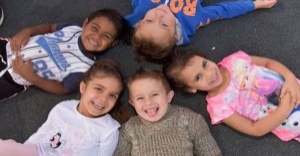 An Acknowledgment of the Country is a way of showing respect for the Traditional Owners and can be given by both non-Indigenous people and Aboriginal
An Acknowledgment of the Country is a way of showing respect for the Traditional Owners and can be given by both non-Indigenous people and Aboriginal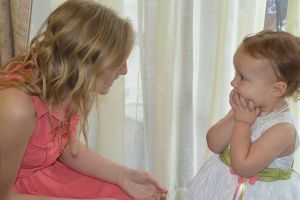 Language plays an important role in a child’s development. It enables a child to communicate effectively with their family, learn at school, socialize with friends,
Language plays an important role in a child’s development. It enables a child to communicate effectively with their family, learn at school, socialize with friends,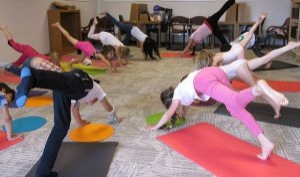 Like adults, children have to deal with their own stress in life. Moving house, starting a new school, preparing for a new sibling - these are
Like adults, children have to deal with their own stress in life. Moving house, starting a new school, preparing for a new sibling - these are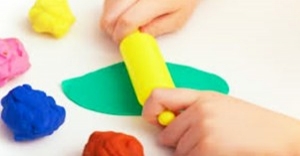 Playdough is such a versatile material. It provides numerous benefits to children as they manipulate it, it is safe and soothing and provides children with
Playdough is such a versatile material. It provides numerous benefits to children as they manipulate it, it is safe and soothing and provides children with Teaching children about sustainability enables them to appreciate and respect the natural environment. Early childhood services can provide meaningful hand on learning experiences in order
Teaching children about sustainability enables them to appreciate and respect the natural environment. Early childhood services can provide meaningful hand on learning experiences in order Recycling is an important concept that teaches children to care for the environment. It encourages children to be responsible and show a growing appreciating for
Recycling is an important concept that teaches children to care for the environment. It encourages children to be responsible and show a growing appreciating for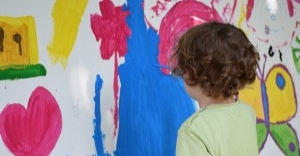 When children apply paint to paper, glue things together, or pound a lump of clay, they experiment with colour, shape design and texture.
When children apply paint to paper, glue things together, or pound a lump of clay, they experiment with colour, shape design and texture.



